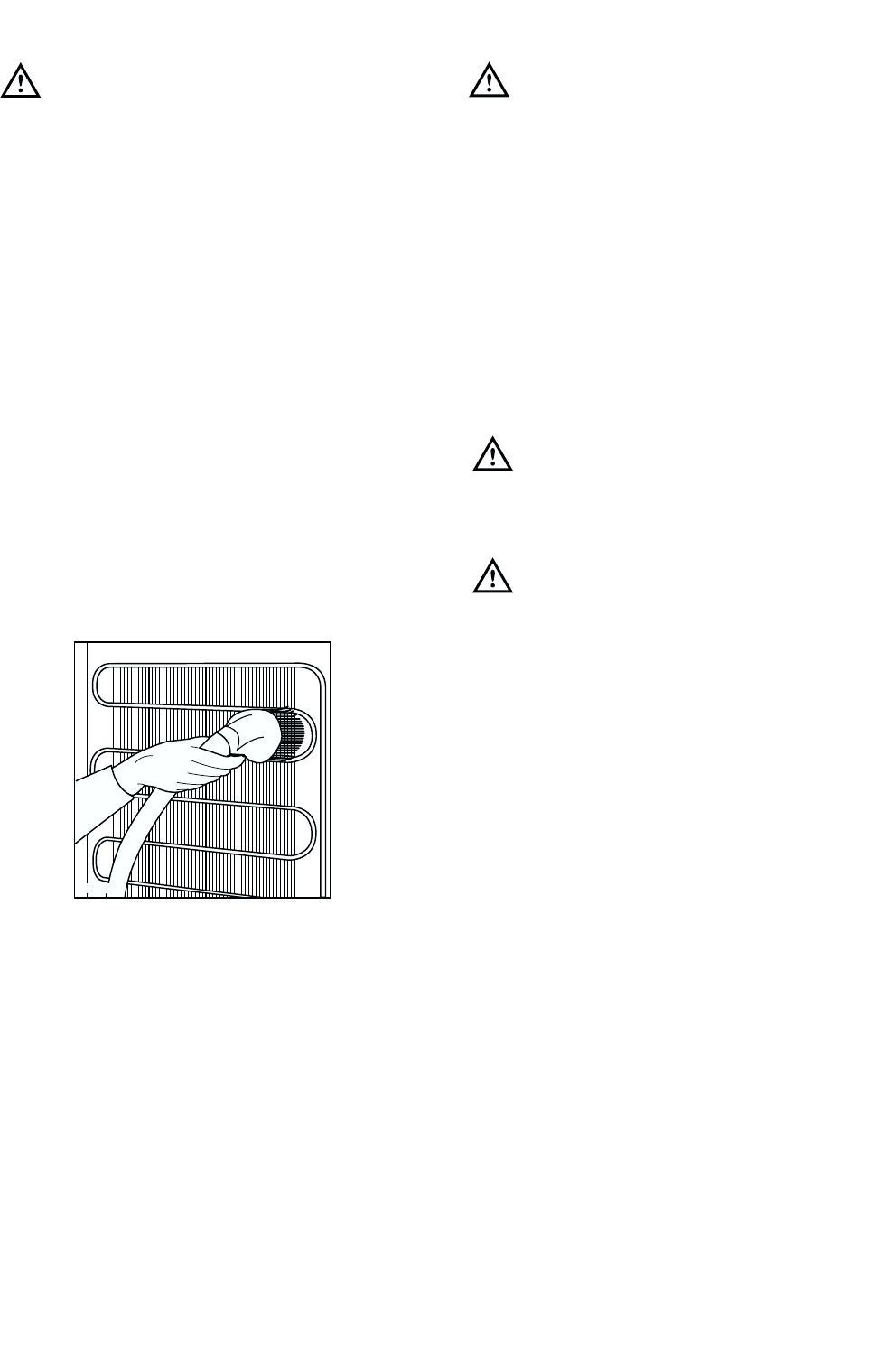
8
MAINTENANCE AND CLEANING
Defrosting
Freezer
Your appliance is frost free, which means there is no
need to manually defrost your appliance as this will
be carried out automatically.
Important
A temperature rise of the frozen food packs, during
defrosting, may shorten their safe storage life.
Attention!
In the event of a power failure causing the
temperature within your freezer to rise, do not re-
freeze the food without checking its condition.
The following guidelines should assist you.
Ice-cream: once thawed should be discarded.
Fruits & Vegetables: if soft should be cooked and
used up.
Breads & Cakes: can be re-frozen without danger.
Shellfish: should be refrigerated and used up
quickly.
Cooked Dishes: i.e. casseroles should be
refrigerated and used up.
Large Pieces of Meat: can be re-frozen providing
there are still ice crystals remaining within them.
Small Joints: should be cooked and can then be re-
frozen as cooked dishes.
Chicken: should also be cooked and re-frozen as a
cooked dish.
When the appliance is not in use
When the appliance is not in use for long periods,
disconnect from the electricity supply, empty all
foods and clean the appliance, leaving the doors ajar
to prevent unpleasant smells.
External cleaning
Many proprietary kitchen surface cleaners
contain chemicals that can attack/damage the
plastics used in this appliance. For this reason it
is recommended that the outer casing of this
appliance is only cleaned with warm water with a
little washing-up liquid added.
An accumulation of dust will affect the performance
of the appliance and cause excessive electricity
consumption.
You MUST ensure that the appliance is switched
OFF.
Once or twice a year dust the condenser (black
grille) and the compressor at the back of the
appliance, with a brush or vacuum cleaner, see
diagram.
PR259
Before any maintenance or cleaning work is
carried out, DISCONNECT the appliance from
the ELECTRICITY supply.
Internal cleaning
Clean the inside and accessories with warm water
and bicarbonate of soda (5ml to 0.5 litre of water).
Rinse and dry thoroughly.
NEVER USE DETERGENTS, ABRASIVE
POWDERS, HIGHLY PERFUMED
CLEANING PRODUCTS OR WAX
POLISHES,TO CLEAN THE INTERIOR AS
THESE WILL DAMAGE THE SURFACE AND
LEAVE A STRONG ODOUR.
13
INSTALLATION
Positioning
This appliance should only be installed at a location
where the ambient temperature corresponds to the
climate classification indicated on the rating plate,
which is located at the left on the inside of the
appliance.
The following table shows which ambient
temperature is correct for each climate classification:
SN +10°C to + 32°C
N +16°C to + 32°C
ST +18°C to + 38°C
T +18°C to + 43°C
The appliance should be located in a dry
atmosphere, out of direct sunlight and away from
continuous heat and extreme temperature, e.g. not
next to a boiler or radiator, or in a very cold room e.g.
an outhouse. If these temperatures are exceeded i.e.
warmer or colder, then the appliance may not
operate correctly.
For building-in and door reversal instructions please
refer to the relevant instructions on the following
pages.
Warning
IF YOU ARE DISCARDING AN OLD APPLIANCE
THAT HAS A LOCK OR CATCH ON THE DOOR,
YOU MUST ENSURE THAT IT IS MADE
UNUSABLE TO PREVENT YOUNG CHILDREN
BEING TRAPPED INSIDE.
Depending upon the position which you choose for
your appliance, you may wish to reverse the way in
which the door opens. To do this, refer to instructions
on “Door reversal directions”.
Important
It must be possible to disconnect the appliance from
the mains power supply; the plug must therefore be
easily accessible after installation.


















